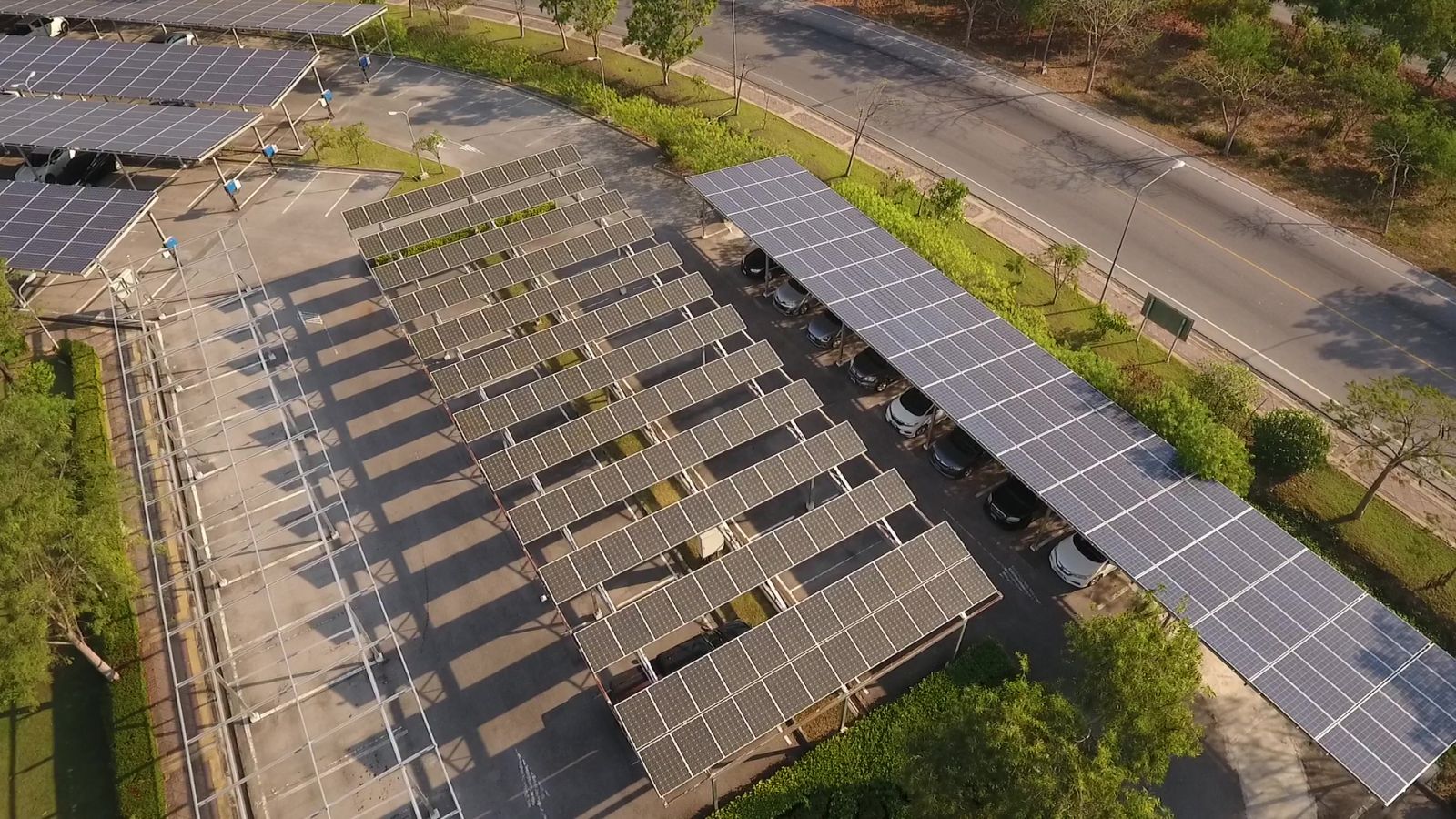Solar Energy
The principle of solar cells is different from general electricity production because the generator is not a coil that rotates between the poles, but it is a semiconductor generated by the process of science and technology. This semiconductor is generally favorable made of silicon which is cheap, non-toxic and an easy to find material. This semiconductor is an insulated in a normal condition or non-conductive, but when receives the sunlight, it has enough energy to cause an electron in an atom of silicon on solar cells come off from the atom. When a number of electrons come off enough to cause the movement of electrons, called electricity, this electricity will be sent to the system to apply in the future. In general, there are two systems as follow: a Grid Connected System, and a Stand Alone System which we use one system or another or both.

The Sirindhorn International Environmental Park has installed solar power in both systems. The Grid Connected System brings the produced electricity to connect and generate with the electricity of the Provincial Electricity Authority (PEA) with a total capacity of 36.63 kW. This system can be connected to the electrical system of the PEA only in the daytime. In the night time, the Environmental Park Sirindhorn International has installed the electricity production system from solar in the Stand Alone System which is an electrical storage system of energy produced during the day time in battery without connected with the electrical system of the PEA with total capacity at 8.325 kW. The Sirindhorn International environmental Park has been used this System with some of the lighting system of the Energy for Environment Centre and the Energy and Environmental Conservation Camps.

The Sirindhorn International Environmental Park has installed eight spots of solar power system as follow:
1. Solar panels at the Energy for Environment Centre have 28.86 kW total capacity. It installed 2 systems which are the Grid connected System using solar panels of 185 watts with 12 groups sequenced, 11 panels in each group, total capacity of 24.42 kW. Another one is the Stand alone Systems, using solar panels of 185 watt have 8 groups sequenced, 3 panels in each group, total capacity of 4.44 kW and 32 batteries.
2. Solar panels at the Energy and Environmental Conservation Camp, have 16.095 kW total capacity , was installed 2 systems as well, the system connected to the electrical system of the country (Grid connected) using a185 watts solar panel with 6 groups sequenced, 11 panels in each group, with 12.21 kW total capacity. Another system is Stand Alone System using a 185-watt solar panels connected in have 7 groups sequenced, 3 panels in each group, total battery power of 3.885 kW with 24 batteries.
3. The street lamp set (Solar Street Light) at the front of the Energy for Environment Centre at 50-watt size with 3 sets of 3 batteries.
The Solar Street Light is lamps used for lighting in walkway road into the village alleys and parking by using electricity from solar energy. They required no wiring, easy to install and can be turned off automatically. They turned on for 12 hours in the night time and turned off in the day time to save energy. Even in the absence of sunlight, Solar Street Lamp has a reserved power to work continuously for 2-3 days
4. Solar Traffic Light at the front of the Energy for Environmental Centre, 6 watt with 2 sets of 2 batteries. The Solar Traffic Light will flash to give signal signs with no electricity required and installed on poles or steel base set
5. The Solar cell panels for water pumping, to restore mixed forests, installed at the reservoir in the Energy for Environment Centre, with 600 watts capacity (12 panels, 50 watts each).
6. The Solar cell panels for water pumping to restore mixed forests, installed at the Shooting Gallery (the old one) with 500 watts capacity (10 panels, 50 watts each).
7. The Solar cell panels for pumping water to watering trees around Mrigadayavan Forest Park. (next to The school of Communication), with 600 watt capacity of 3 panels, 200 watts each.
8. The Solar cell panels for water pumping to restore forests with 650 watt capacity of 5 panels, 130 watts each.



